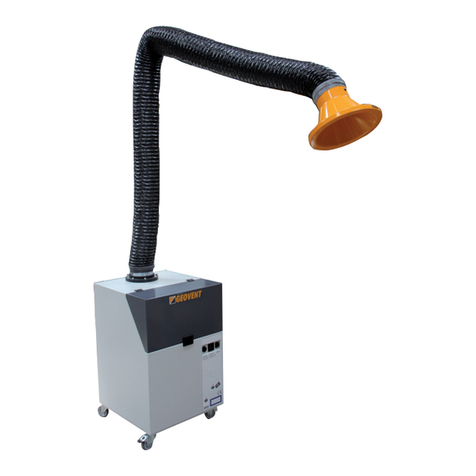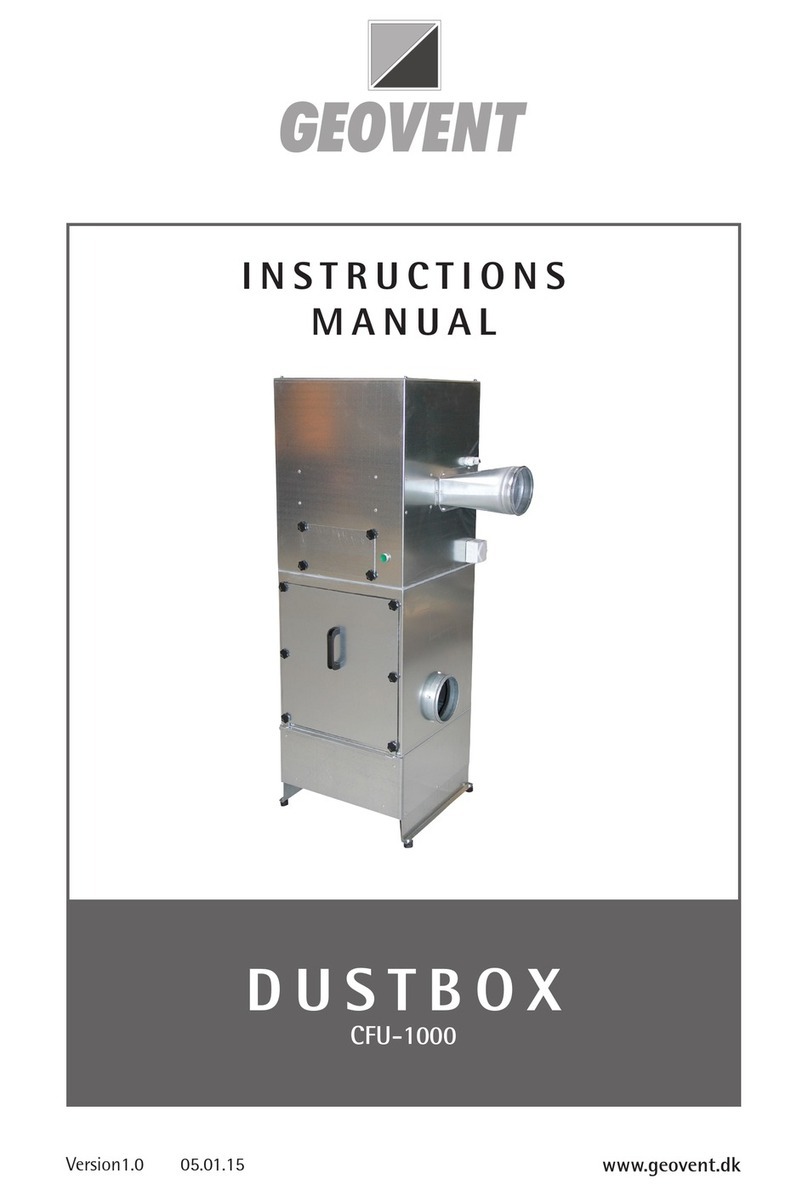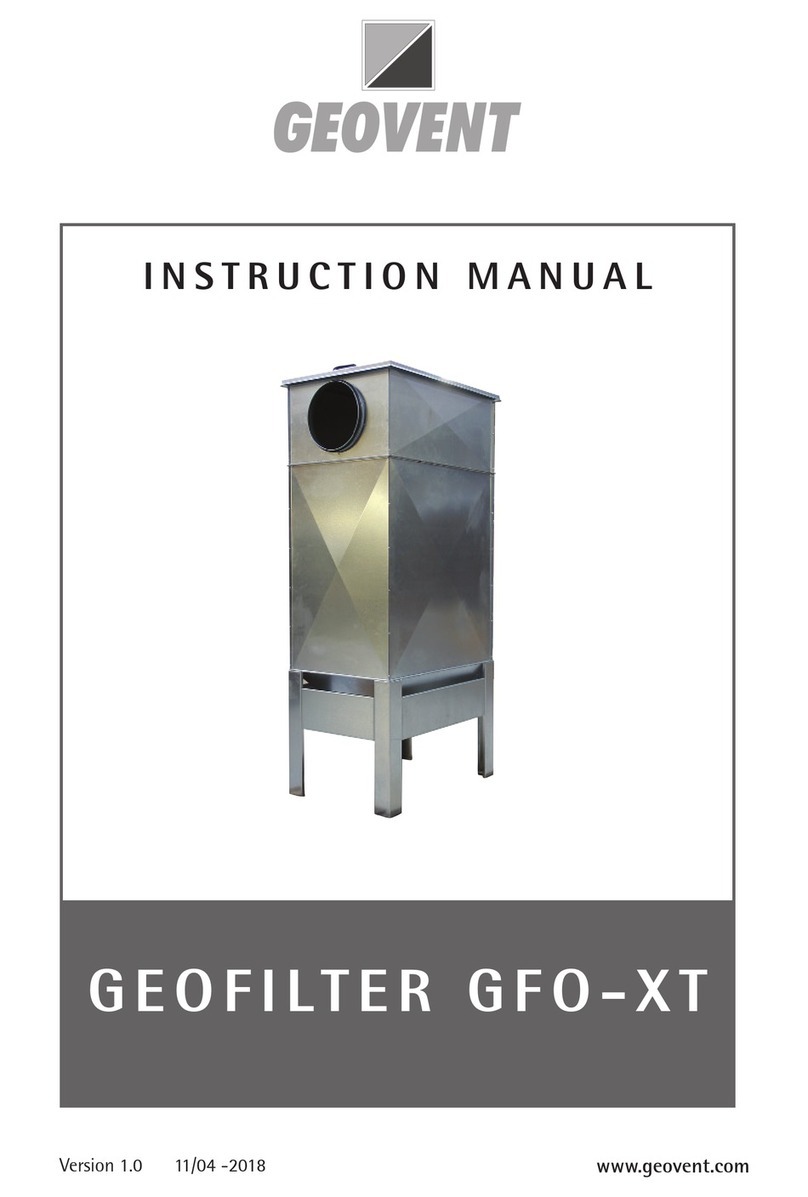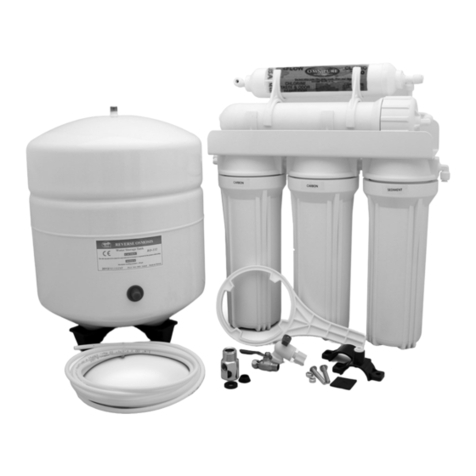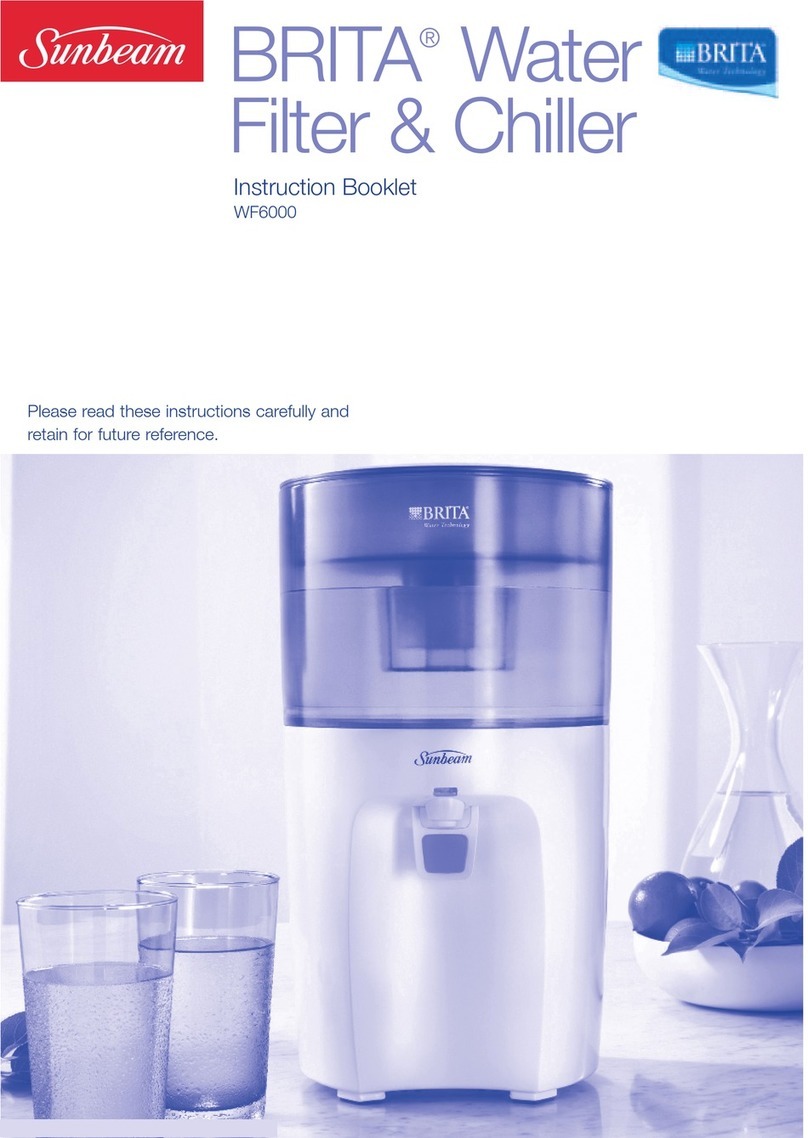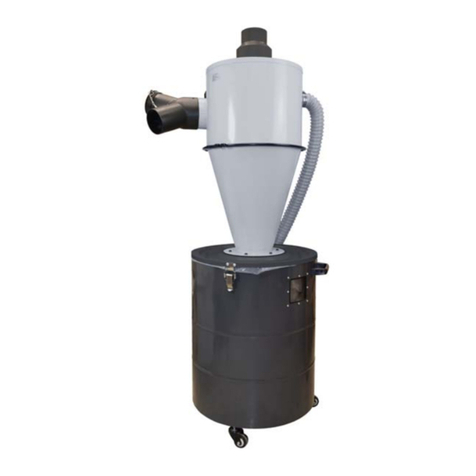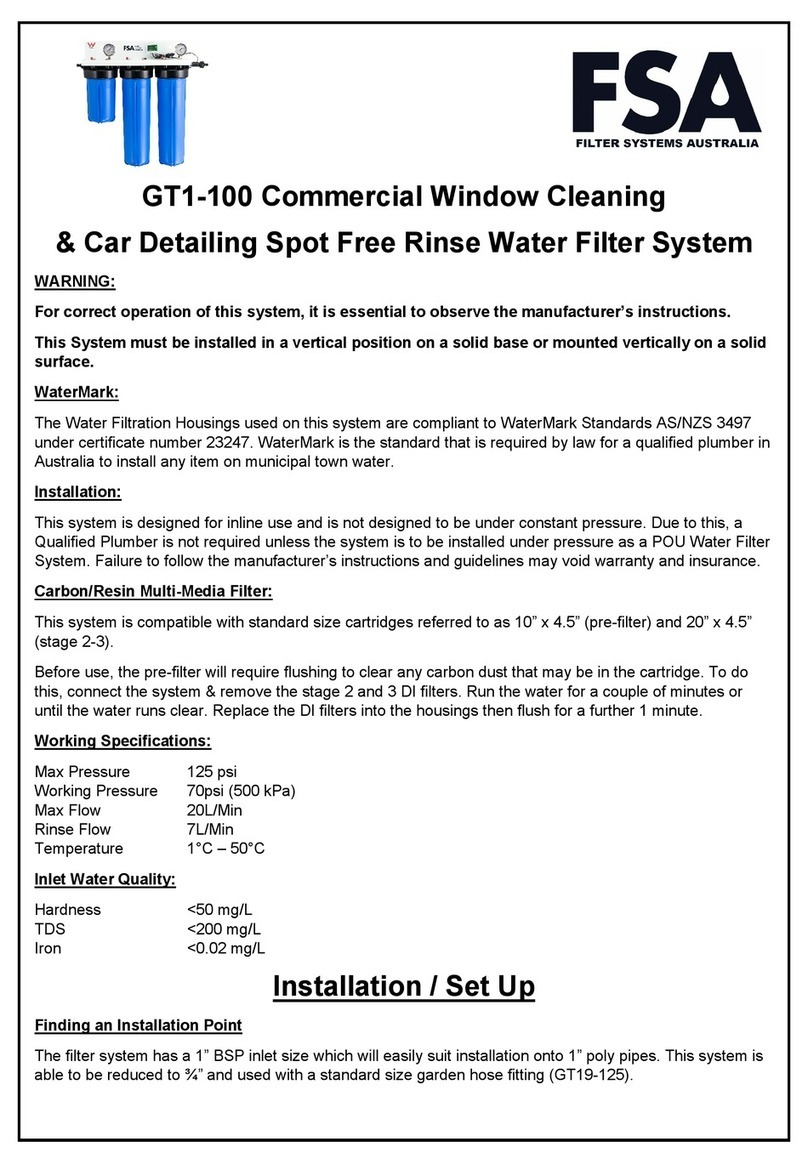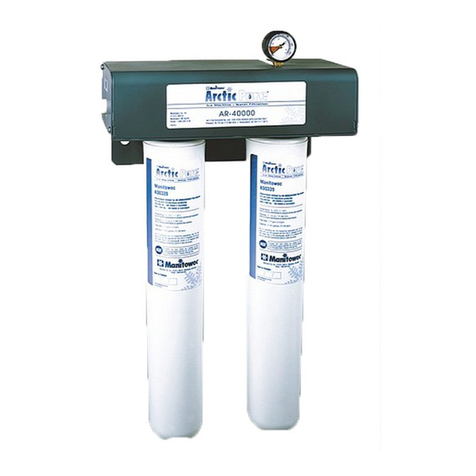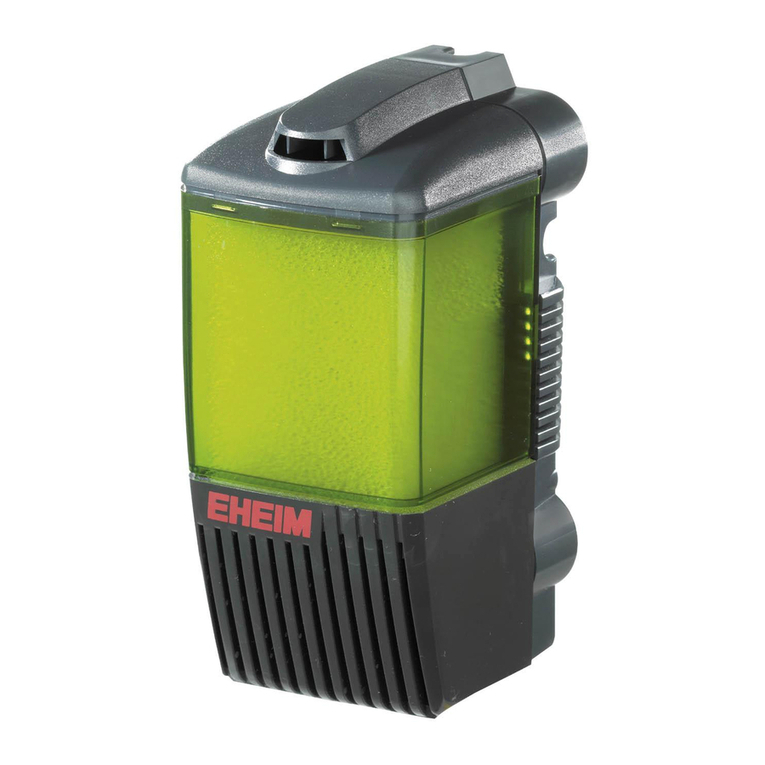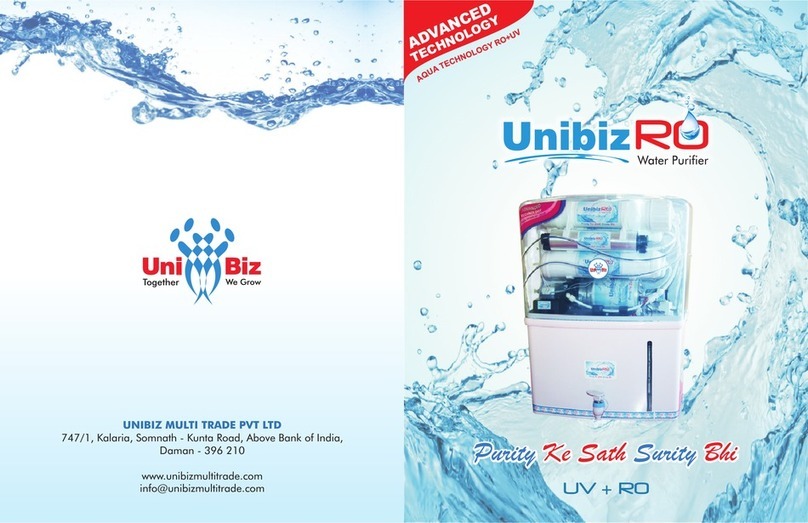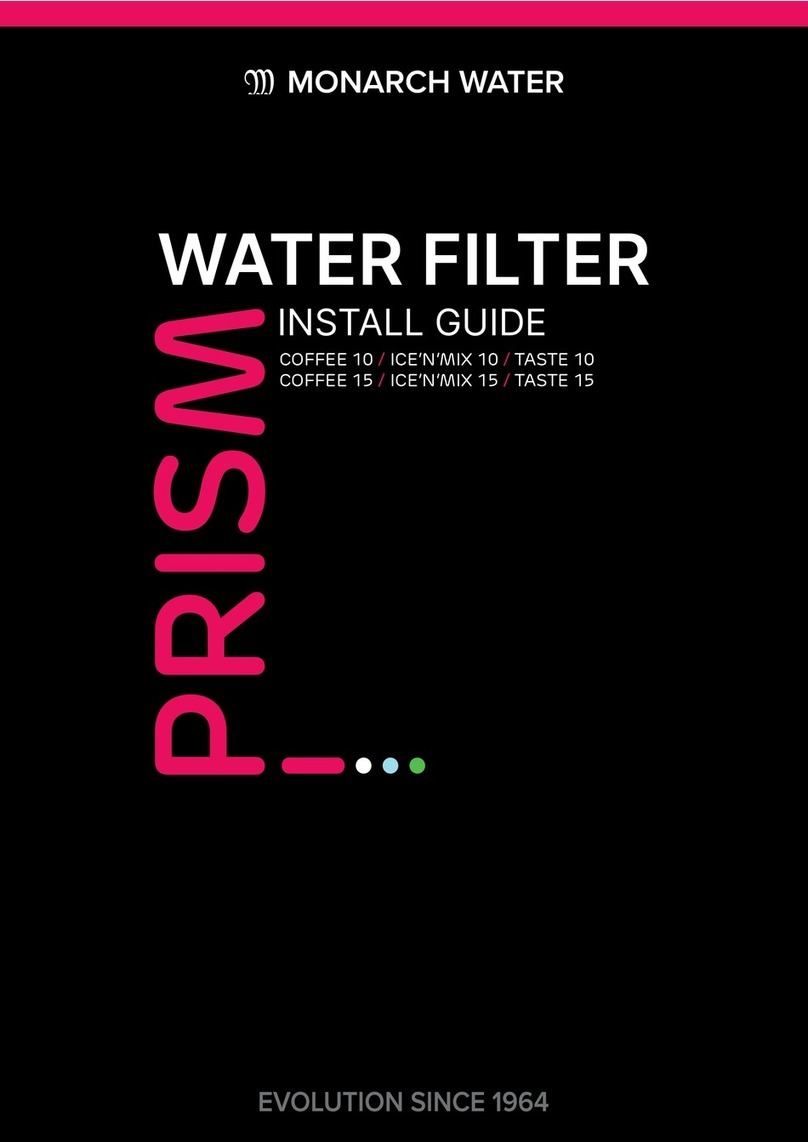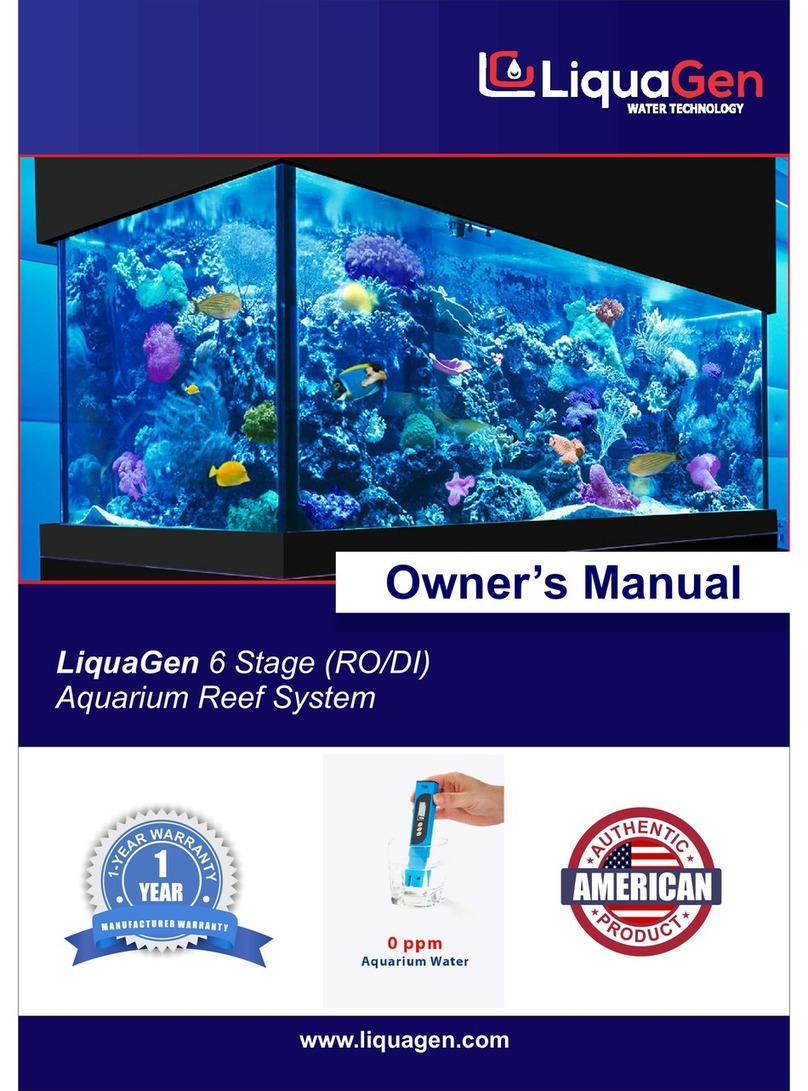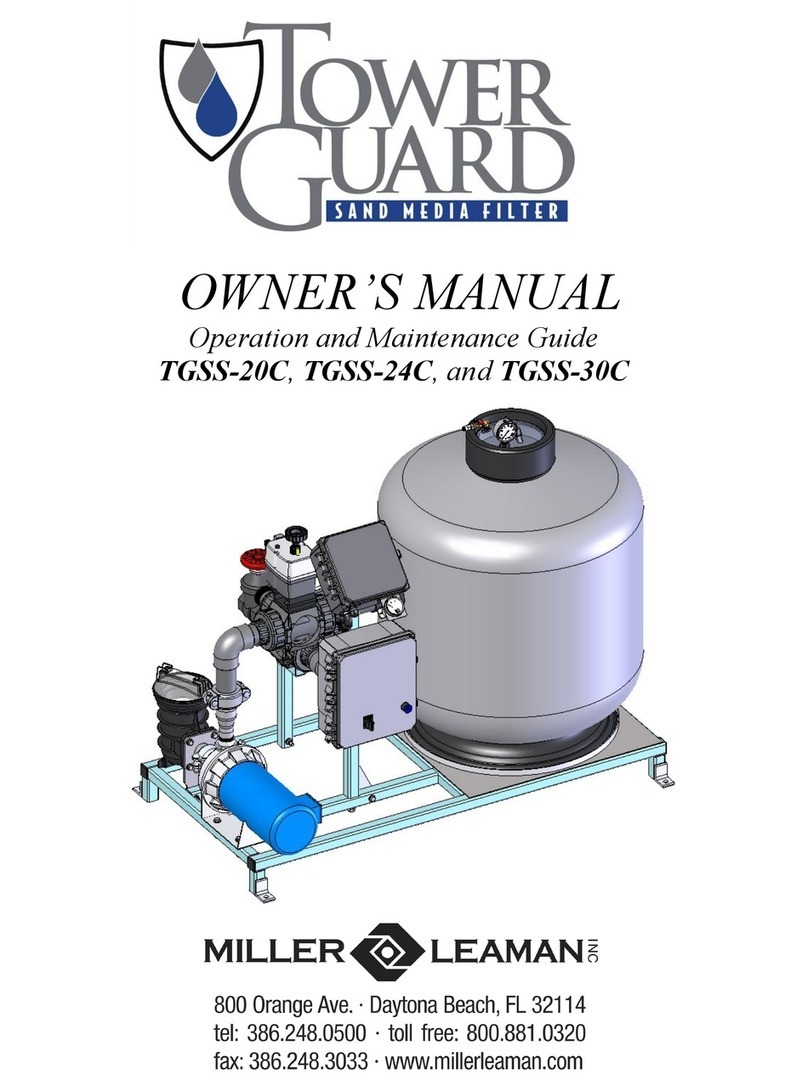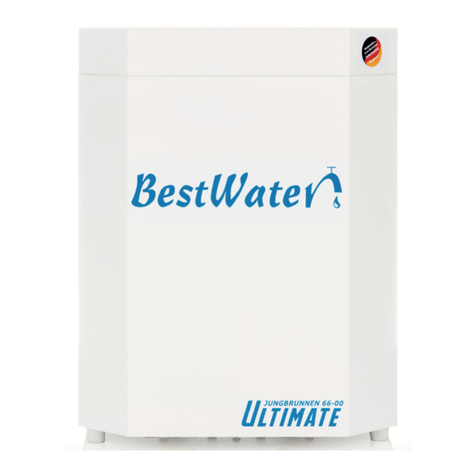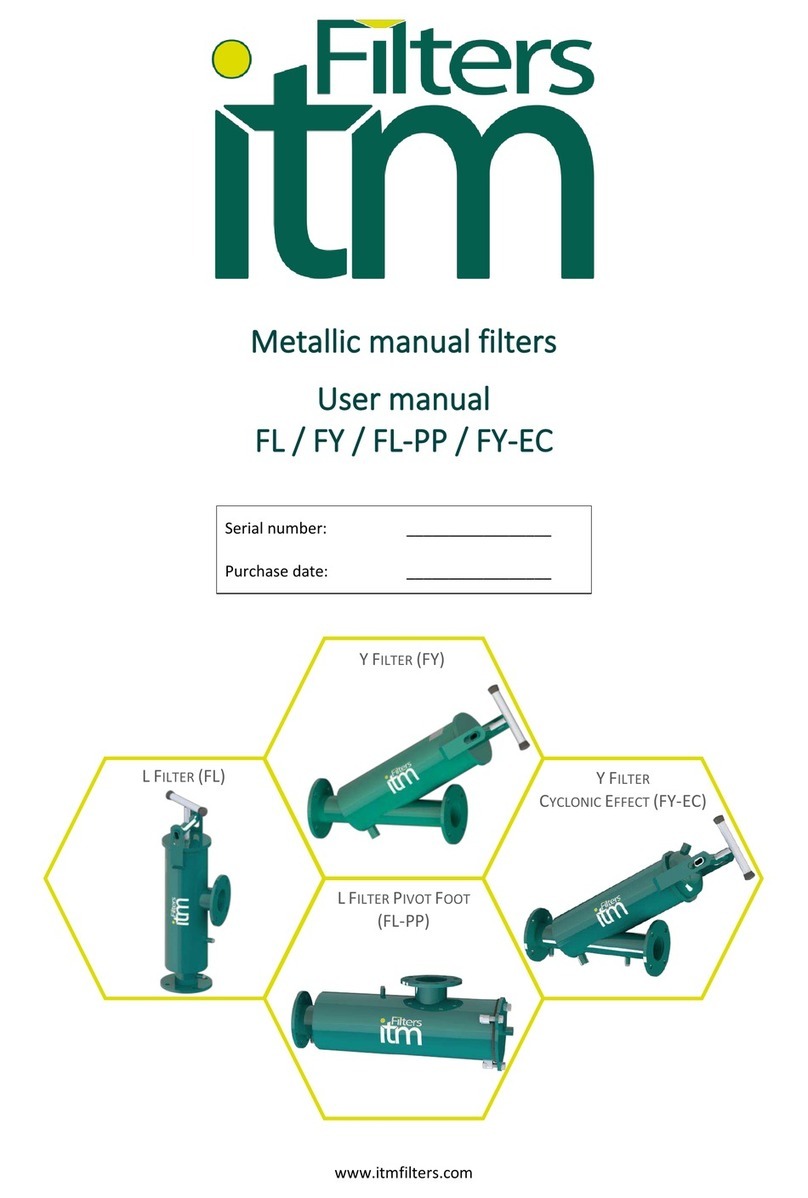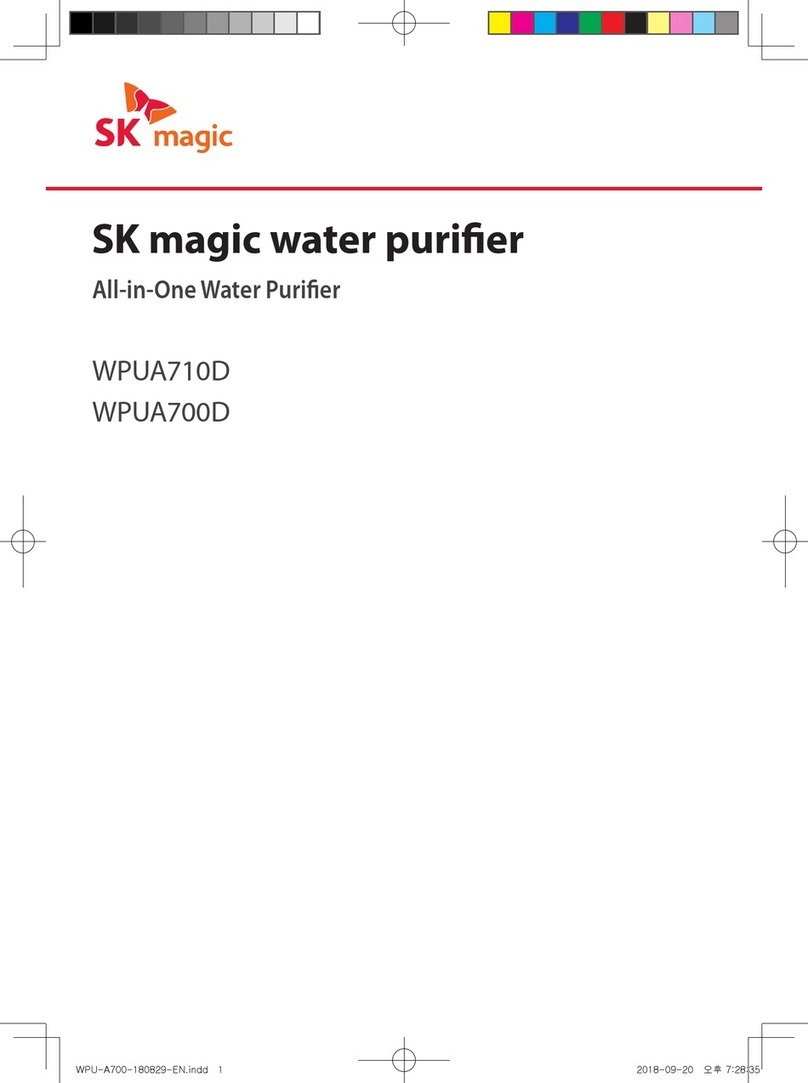Geovent GEOFILTER GFB2 W3 User manual

GEOFILTER
GFB2 W3
GFB2 W3 3-1, GFB2 W3 6-2, GFB2 W3 9-3, GFB2 W3 12-4
INSTRUCTION MANUAL
www.geovent.com
Version 1.0 02.01.2023

2

3
Contents
1.0 Introduction.............................3
2.0 Safety ................................3
2.1 General safety ..........................3
2.2 Danger ................................3
3.0 Machine oveview ........................4
3.1 Description ............................4
3.2 Intended use ...........................4
3.3 Machine specifications ....................4
3.3.1 Design ..............................4
3.3.2 Technical data ........................4
3.3.3. Combination of filter units................4
3.3.4. Combination of fans and filters............4
4.0 Transport, handling and storage ............5
5.0 Assembly, installation and start of operation ...5
5.1 Location ...............................5
5.2 Installation .............................5
5.3 Control and test of the security systems ......5
6.0 Timer control panel.......................6
6.1 Operating the filter .......................6
6.2 When the product has been installed .........9
7.0 Control, test and maintenance .............9
7.1 Control ................................9
7.2 Maintenance ...........................9
7.3 Replacing the filter cartridges..............11
8.0 Cleaning ..............................12
9.0 Troubleshooting ........................12
10.0 Dismantling, disabling and scrapping.......13
11.0 Documents and drawings................14
12.0 Liability .............................17
13.0 Declaration of conformity ................17
14.0 Spare part list .........................18
1.0 Introduction
This manual is made and designed in order to facilitate
the best and most secure interaction with the product.
The manual is relevant for people involved in transpor-
tation, stocking, installation, using, maintaining and all
other thinkable interaction with the product.
The manual must be read in full and understood before
interacting with the product.
When the manual has been read and understood in full,
the table of contents can be used to find the relevant
information in each case.
The product is manufactured by:
Geovent A/S
Hovedgaden 86
DK-8861 Løgstrup
DENMARK
Tel.: (+45) 86 64 22 11
E-mail: [email protected]
www.geovent.com
This manual is to be used for all interactions with the
product including: Transportation, stocking, installation,
operation and maintenance.
This product is marked with: (example)
2.0 Safety
2.1 General safety
Carefully read this manual before use and observe the
safety instructions in order to avoid injuries!
Keep this manual in a safe place!
Secure that all users of the product have read this ma-
nual and that they follow the instructions as described.
Observe all instructions marked on the product!
Observe the indications of the manufacturer.
Never use the product if you are in doubt about how it
works or what you should do.
Observe all instructions marked on the product!
Observe the indications of the manufacturer.
When doing maintenance or replacing filters, follow the
instructions in chapter 7.0.
Power cables and pneumatic air hoses should be repla-
ced at once, if they are damaged. This should only be
done by authorised and qualified personnel.
Do not modify the product or use spare parts from other
suppliers than Geovent, as this may hamper the product
and the function.
All electrical installations must be carried out by an
authorised electrician.
2.2 Danger
You must wear safety gloves when handling or using the
product to protect your hands from scratches etc.
Be aware that the product may tilt when you move it.
You must handle the product with care and tie it safely to
the truck or the fork lift when it is in transport.

4
Place the product on a solid, flat foundation (e.g. a con-
crete floor) and anchor it. Allow space to perform filter
changes.
When you change the filter cartridges, follow the instruc-
tions in chapter 7.3.
Disconnect the mains plug for all kinds of maintenance
tasks.
While opening, cleaning and maintaining the unit or
while changing parts, disconnect the unit from the mains
supply and secure it from being restarted.
In case of an accident or a fire:
Call for help. Disconnect the product from the mains
supply.
Follow the normal and local requirements in case of an
accident or a fire.
In case of problems:
Disconnect the product from the mains supply.
Inspect the product to see if a repair is possible.
If a repair is not possible you should dispose of the product.
Please follow the instruction for disposal in chapter 10.0.
3.0 Machine overview
3.1. Description
The GFB2 W3 is a filter unit which is used for different
filtration purposes.
The filter unit is equipped with an automatic cleaning
device which can be adapted to the intended use.
3.2 Intended use
The GFB2 W3 is used to filter the extracted air from in-
dustrial processes such at welding.
The filter is not to be used in areas categorised as
ATEX zones, e.g. with dust from aluminium, flour, wood,
and other mediums that present an explosion hazard.
The filter self-cleans automatically as a compressed air
pulse is sent down through the filter cartridges, causing
the particles on the filter to be blown off and collected in
the bucket below.
The particle catch in the inlet functions as a diffusor and
catches large particles, that could otherwise damage the
filter cartridges. The particles fall into the bucket.
3.3 Machine specifications
3.3.1 Design
Casing: Galvanized steel (corrosion catego-
ry III), with baffle plate in the inlet.
Filter cartridges: FT/18 99,9% v/0,3µm
Air pressure tank: Powder coated
Automatic control: Cleaning control with digital display
for adjusting cleaning time, cleaning interval, and shut
down cleaning.
Collection bucket: Galvanized steel – 24 liter capacity.
3.3.2 Technical data
Dimensions
Model/Dimension A
[mm]
B
[mm]
Inlet
[mm]
GFB2 W3-3-1 810 635 ø315np
GFB2 W3-6-2 810 635 ø315np
GFB2 W3-9-3 855 935 ø400np
GFB2 W3-12-4 900 1235 ø500np
Model/Dimension Outlet
[mm]
Clearance
[mm]
Weight
[kg]
GFB2 W3-3-1 ø315np min. 927 95
GFB2 W3-6-2 ø315np min. 927 145
GFB2 W3-9-3 2xø315np min. 927 190
GFB2 W3-12-4 3xø315np min. 927 230
Compressed air: 3,5 - 6 bar - Clean and dry air
Air consumption: 3 L compressed air per shot
Power supply: 24VDC or 230VAC (standard)
Temperature: -10°C - +65°C
Corrosion class: III
Sealing class.: Class C
Temperature extracted air Max 80°C
Temperature surroundings -10°C - +65°C
Relative humidity must be below < 90%
Differential pressure drop
Typical pressure drop: 1.000-1.500 Pa
3.3.3. Combination of filter units
A combination of the filter units is possible to enable
higher suction volumes. For this purpose, the filter units
must be connected in parallel.
Possible combinations and reference values are given in
Chapter 14.2. listed.
3.3.4. Combination of fans and filters
The filter systems can be operated with different fans.
An overview of the combination of fans and filters is gi-
ven in Chapter 14.2. shown.

5
4.0 Transport, handling and storage
During transport in a truck or in another means of trans-
portation the product must be securely packed in a box
or a pallet and covered with a water proff material.
The product must be securely stowed in the truck so that
it will neither tilt nor shift during transport.
During transport over a short distance e.g. in a stock or
a factory, the product can be moved by means of a forklift
or a stabeler.
When moved it must be secured that the product does
not tilt or shift. And it must be secured that the limitations
of the means of transportation is not exceeded.
Secure that there are no people around the product,
when the product is moved.
The product must be placed in a dry place and covered
securely, in order to secure that moist, metal parts or
other substances do not damage the product.
It is not allowed to place anything on top of the product.
5.0 Assembly, installation and start of
operation
5.1 Location
For error-free performance, the product should be in-
stalled indoors, e.g. in a well-ventilated room. We do not
recommend outdoor installation. If indoors installation is
not possible, the product must at least be installed under
a roof.
We do not recommend placing the filter outside, as it
may cause condensation, and some of the electronic
components may cease to function at temperatures
below -10°C.
Before installing the filter, please make sure that the op-
timum installation area is selected. Is there room enough
for the filter indoors? Is there space enough for carrying
out satisfactory installation/-service of the filter?
Place the product upon a solid, flat foundation (e.g. a
concrete floor) and anchor it.
5.2 Installation
The filter is delivered complete, fully mounted and
pre-programmed from factory, ready to be connected to
the ducting system and the mains. The installation pro-
cedure described below must be made by an authorized
installer
Procedure:
1. Place the product upon a solid, flat foundation (e.g. a
concrete floor) and anchor it. Allow space to perform
filter changes.
We do not recommend placing the filter outside, as it
may cause condensation, and some of the electronic
components may cease to function at temperatures
below -10°C.
2. Attach the product to a circular duct on both the clean
side and the dirty side (the bottom tube connection is
always the dirty side). Remember to seal the connec-
tion with joint ller and/or tape!
3. To ensure proper dilution, the exhaust should be at
least two metres over the rooftop towards the atmo-
sphere with a minimum exhaust speed of 8 m/s.
4. All electronic components must be installed by an au-
thorised electrician.
Protect the cable and connector from heat, moist, oil
and sharp edges.
IMPORTANT:
Cleaning pressure can be adjusted from 3.5 to 6 bar
pure dry air as needed.
Increasing the cleaning pressure to more than 6 bar
gives a risk of damaging the lter cartridges.
Sort and dispose the packing material according to local
regulations.
5.3. Control and test of the security system
When the product is installed you must secure:
a. That the filter is placed on a solid, flat foundation and
anchored to the ground or the wall so that it cannot tilt.
b. That the doors of the product is securely closed.

6
6.0 Timer control panel
6.1 Operating the lter
The filter is delivered as standard with timer control.
Menu
How to access programming
Press SET
Press + and - to select the required function.
Press OK to confirm.
Increase or decrease the value of the parameter
Press OK to confirm and exit.
Press SET again to exit programming mode.
Display
The display shows Off if terminals 14 and 15 are broken.
The display shows -0- if terminals 14 and 15 are closed
but 12 and 13 are broken (fan switch)
Cleaning function
The Cleaning function is programmable.The pulse and
pause time control can be set in the function menu.
The pause should be adjusted for the current applicati-
on. From factory, it is set to shoot every 350 seconds.
The timer setting may be changed in F3.
Shot down cleaning (fan)
The function allows one or more cleaning sequences
(the number selected in F13), when the fan is turned off.
The pulse time is always as selected in F02, while the
pause time is selected in F14.
The display alternately shows the number of seconds to
cleaning and the code ”PCC”.
List of Functions
F02: Pulse time.
Possible values: 0.5 - 5.00. Step 0.01
Default = 0.20
F03: Pause time, cetween shots:
Possible values: 001 - 999. Step 1
Default = 175
F04: Number of valves.
Possible values: 01 - 16
Default = Automatic
F05: Output voltage.
Possible values: d24 / a24 /115 / 230.
Default = a24
F06: Manual cleaning cycle.
Possible values: The number of valves set in F4
Press SET to activate.
F13: Shut down cleaning cycles.
Possible values: 01 - 99. Step 1
Default = 01
F14: Pause time between cleaning cycles after fan
stop.
Possible values: 001 - 999. Step 1
Default = 8.
F15: Service timer.
Possible values: 001 - 999. Step 1 (1=10 h)
Default = 100 (1000 h)
F16: Service alarms.
Possible values: 0 (off) -1 (on).
Default = 0 (off)
F17: Reset service timer.
Possible values: 0 (off) -1 (reset).
Default = 0 (off)
Note: The service timer will be reset and the F17 will be
reset to 0 by setting F17 to 1.

77
Alarms:
The unit runs a number af checks during the start-up cycle and during normal operation.
The possible alarms and respective solutions are shown in the following table.
Alarm Description Action
E01 F05 set to 24Vdc - ac jumper detected.
24Vdc, switch the device off and move the ac/dc jumpers to dc.
24Vac, Press OK, then press SET, set the function F05 using
+/-, select A24 and press OK to confirm.
E02 F05 set to 24Vac - dc jumper detected.
24Vac, switch the device off and move the ac/dc jumpers to ac.
24Vdc, Press OK, then press SET, set the function F05 using
+/-, select d24 and press OK to confirm.
E03 F05 set to 24Vac or 24dc.
Voltage out of range detected.
24V valves, switch the device off and move the
output voltage selection jumper to 24V.
If the jumper is in the correct position, press OK then SET,
select the F05 function with +/- set the correct current and
press OK.
E04 F05 set to 115V or dc.
Voltage out of range detected.
115V valves, switch the device off and move the output volta-
ge selection jumper to 115V.
If the jumper is in the correct position, press OK then SET,
select the F05 function with +/- set the correct current and
press OK.
E05 F05 set to 230 V.
Voltage out of range detected.
230V valves, switch the device off and move the output volta-
ge selection jumper to 230V.
If the jumper is in the correct position, press OK then SET,
select the F05 function with +/- set the correct current and
press OK.
E06
The current of the solenoid valve is lower
than the minimum threshold or discon-
nected solenoid valve.
Check that the solenoid valve is connected correctly and the
respective data.
The alarm is self-reset.
E07 The current of the solenoid valve is hig-
her than the maximum threshold.
Check that the solenoid valve is connected correctly and the
respective data. The alarm is self-reset.
E08 Output short circuit.
Alarm cannot be reset
Switch the filter off, check the solenoid valve, and switch the
filter back on.
E11 Maintenance deadline reached. Carry out maintenance.

88
Connections diagram
9
Connectiondiagram

9
• Regularly check the filter’s clean side for dust particles
and change filter cartridges in the event of leakage.
Alarm
When the alarm is activated, the filter cartridges needs
to be changed. Follow the instructions in chapter 7.3.
Emptying the collection bucket
Empty the bucket when it reaches around 2/3 capacity,
otherwise it may place further strain on the filter cartrid-
ges. Follow the instructions and illustrations below.
Always use appropriate
protective equipment
6.2 When the product has been installed
When assembly of the filter is complete, installed corre-
ctly and ready for use, there will not be any interaction
between the user and the filter besides emptying the
bucket. Naturally, the user should be aware of whether
there is correct suction in the exhaust system.
IMPORTANT: It is imperative that the cleaning
cycle intervals are adjusted according to the load put
on the filter.
First when installing and secondly after a period
where it is evaluated if the intervals between clea-
ning shots should be shorter or longer.
If the shots are fired too often, the energy cost will
be higher.
Are the shots fired too seldom there will be more
strain on the fan making fitration more costly and
ineffective and it will shorten the lifespan of the filter
cartridges.
7.0 Control, test and maintenance
7.1 Control
Before nally putting the lter into operation its function
should be tested and the cleaning cycle adjusted, so that
it ts the application, in which it will be used.
Check that the pause interval on the cleaning system is
appropriate for the actual amount of dust – adjust if nec-
essary (see instructions for lter operation).
Check for vibration or noise issues during use of the pro-
duct. Check that the entire system is completely sealed.
In case of squeaking sounds, locate leakage and seal
with joint ller.
We recommend checking the ventilation system to en-
sure, that it is delivering the amount of air which the
system is proportioned for. Measure the amount of air
and regulate using the regulation valve. In the event of
overcapacity, the power usage can exceed the capacity
of the fan motor, thereby causing the motor to burn out.
See the manual of the fan.
7.2 Maintenance
A qualied service engineer should check the entire sys-
tem at least once a year.
Periodic maintenance of the lter:
• All electronic parts should be checked yearly
• Check that the supply of compressed air is clean and
dry to avoid condensation causing damage to the lter
cartridges and solenoid valves.
• Check the pressure loss over the lter and change the
lter cartridges if pressure loss exceeds 2.000Pa.

10
5. Pull down the ap, then it is possible to remove the
bag.
2. Pull the handle up.
3. Pull/roll out bucket.
6. Empty the bag for air.
1. Disconnect valve.
4. Loosen the hand screw.
7. Use a strip to close the bag.
8. Put a new bag in the bucket. Make sure the bag is
placed correctly. Avoid breaking the bag when the
bucket is placed back in position.
9. Pull up the ap and tighten the hand screw.
10. Place the bucket back in position and push the han-
dle down while holding the bucket in place. Recon-
nect the valve to the bucket.
11. Connect the valve

1111
to take the necessary personal safety precautions
such as wearing a respirator and gloves that meet
the Working Environment Authority’s rules for working
with contaminated dust.
Opening and closing the door
1. Turn o the main power.
2. Loosen the bolts, turn the latch 90° to the left.
3.The door opens (the lter cartridges can be replaced)
4. After replacing the filter cartridges, close the door.
5. Turn the latch 90° to the right, while holding the door
in place.
6. Tighten the bolts until the latch is tightly secured to
the door.
Security Check:
1. Check that all 4 latches are tight so they cannot be
loosened by hand.
2. Pull the handle to be sure that it is locked.
7.3 Replacing the filter cartridges
The lter cartridges should be changed after about
4.000 – 8.000 hours of operation or after a maximum of
4 years. This depends partially on the strain on the lter,
and partially on what its use has been.
Procedure:
1. The power supply must be disconnected and unable
to be activate during servicing.
2. Before opening the door of the lter, it is important
3. Loosen all screws on the top door of the lter unit.
4. Open the door on top of the lter unit.
5. Loosen all screws holding the lter cartridge in place.
6. Pull a plasticbag over the lter cartridges.

1212
the particles on the textile of the filter to be blown off and
collected in the bucket below.
Do not open the doors during operation to avoid injury.
Cleaning of the inside of the product is not recommended.
When the doors of the product are opened, you must
wear protection gloves, eye protection and a suit cove-
ring your body.
9.0 Troubleshooting
In the event of problems caused by increased pressure
loss, low amounts of air etc., go through the following
points:
Dust proceeds to come out of the inlets
The cleaning system is having to “blow” too much dust
o the cartridges at one time and the dust is seeping into
the tubes. Reduce the pause interval on the lter control
until the dust no longer comes out through the inlets.
Pressure loss increases quickly during use and air
level falls accordingly
The cleaning system cannot keep up with the dust level.
- Reduce the pause interval until the pressure loss is
normal again. If this fails, the lter cartridge must be
changed.
- Increase cleaning pressure (to a maximum of 6 bar, as
the lter cartridges could otherwise be damaged).
- Increase after-cleaning.
Dirty lter alarm lamp
The alarm lamp i activated if the dierential pressure are
to high over the lters. The lter cartridges need to be
replaced before resuming operation.
5. Turn the lter cartridges to remove it.
6. Empty the bag for air and use a strip to close the bag.
7. Dispose of the used lter cartridges according to local
rules for hazardous waste.
8. Mount the clean lter cartridge by repeating the above
steps in reverse order.
9. Check the lter cartridges for functionality and leak-
age before use.
How to optimize your lter
1. Clean the lter cartridges using correct air pres-
sure
2. Correct the cleaning pause time
3. Ensure that the lter cartridges is dry
4. Enable shut down cleaning
8.0 Cleaning
The outside of the product is cleaned by means of a
vacuum cleaner or a damp cloth.
NOTE: Do not clean the product during operation. Turn
the product off before cleaning.
The filter self-cleans automatically as a compressed air
pulse is sent down through the filter cartridges, causing

13
10.0 Dismantling, disabling and scrapping
Deactive the product by disconnection the electrical
mains. Dismantle the compressed air pipes and other
tubes etc.
When you dispose of the product you should dismantle
the filter elements as described in chapter 7.3.
It is very important that the instructions of this ma-
nual is followed in order to avoid contamination of
people and the environment!
The inside of the product must be cleaned by means of
a vacuum cleaner with a filter which suits the purpose.
Dismantle the electronics, wires and cables and put
these into a suitable bag. Afterwards dispose of it accor-
ding to local regulations.
Dismantle the metallic parts by unscrewing screws and
bolts. Afterwards cut the larger pieces into smaller pie-
ces and dispose of it according to local regulation.
BEWARE of sharp edges of the metallic parts which
could harm persons etc.
The packing material must be sorted according to local
regulation in order to be able to reuse the material.

14
When T4 (oating input) is
activated the Multibox is
activated and CTS and
relay motor in the bottom
is activated. +24V
CTS relay -
activated when
the box is
activated.
T2 - 24V out
230V
10 11
Machine/welder
Note: If error, switch terminal 2 and 3 on freqency converter. This will typically solve the problam as 0V is sent in to AI
Control on GFB2 Filter
12 13 15 16
J N 0
230 V
Multibox III
JN0 8 9 10
230 V
MOTOR Alarm
Terminals
123
GFD Damper
1 2 3
54
Sensing coil
Machine/welder
N F
380 V
N F J FF
Power Smart
START/STOP SIGNAL FOR FAN/MULTIBOX - connected in parallel
U + V + W +PE
1
2
3
4
5
6
7
8
9DI2
Start/Stop signal
PowerBox III
230 V
GND +24V +24V
GFD Damper
123
NO
CNC
Power coil connects to
10 and 11
One phase from the
welding plant is looped
through the sensing coil
MULTICOUPLING DIAGRAM - TERMINALS, MULTIBOX AND FREQUENCY INVERTERS
T10 is only used
in MultiboxSRC
AI1
AGND
GND
DCOM
DI1
400 V
L1
L1
L1
PE
Fi
R-
R+
ABB ACH 580
Start/Stop signal
U + V + W +PE
1
2
3
9
10
11
12
13
24V
T10 is only used
in MultiboxT10 is only used
in Multibox
T10 is only used
in Multibox
SRC
AI
GND
GND
COM
DI1
400 V
L1
L1
L1
PE
Fi
R-
R+
ABB ACS 150
Start/Stop signal
Connect one of the
following frequency
inverters
N L
CTS
Quick guide - also see m
anual
P0: Version selector -
select 530 (most common)
P1: Adjustment set point [
Pa]
P2: Min. Alarm limits [s]
at too low pressure
P3: Max. Alarm limit [s]
at too high pressure
P10:
shows current pressure.
Adjusting the frequency inverter:
See manual -
important parameters to adjust:
Motor data: Typically par
ameter group 99
Ramp up/down: Typically
parameter group 22.
Frequency Max/Min:
Typically parameter
group 20 and 11
IMPORTANT
Jumper on the bottom (S1) must be
switched from “I” to “U”
This will change output from current to voltage.
Remember to bridge GND and COM.
Enable input
Fan input
Adjusting Multibox III:
Fi
R-
R+
SRC
AI2
GND
PW
COM
S1
400 V
T
S
R
PE
INVT GD20
Start/Stop
signal
U + V + W +PE
+24V
SRC
AI1
GND
PW
COM
S1
400 V
T
S
R
PE
INVT GD350
Start/Stop
signal
U + V + W +PE
+24V
11.0 Multi coupling diagram

15
Dimensions
GFB2 W3-6-2
Inlet mm: ø315np
Outlet mm: ø315np
Dimensions
GFB2 W3-3-1
Inlet mm: ø315np
Outlet mm: ø315np

16
Dimensions
GFB2 W3-9-3
Inlet mm: ø400np
Outlet mm: 2xø315np
Dimensions
GFB2 W3-12-4
Inlet mm: ø500np
Outlet mm: 3xø315np

17
12.0 Liability
Warranty
Geovent A/S grants a warranty for products, which
are defective, when it can be proved that the defects
are due to poor manufacture or materials on the part
of Geovent. The warranty comprises remedial action
(reparation or exchange) until one year after the date of
shipment.
No claims can be made against Geovent A/S in relation
to loss of earnings or consequential loss as a result of
defects on products from Geovent.
Wear on parts such as filter cartridges and hose is not
included in the warranty.
User liability
In order for Geovent to be capable of granting the
declared warranty, the user/fitter must follow this
instruction manual in all respects.
Under no circumstances may the products be changed
in any way, without prior written agreement with
Geovent A/S.
Please refer to the current sales and delivery conditions
at www.geovent.com
13.0 Declaration of conformity
The manufacturer: GEOVENT A/S
HOVEDGADEN 86
DK-8831 LØGSTRUP
hereby declares that:
The product: GFB2 filter W3
Model: GFB2 W3-3-1, GFB2 W3-6-2,
GFB2 W3-9-3, GFB2 W3-12-4
complies with the relevant parts of the following directi-
ves and standards:
Directive 2006/42 / EC of the European Parliament and
of the Council of 17 May 2006 on machines and amen-
ding directives 95/16 / EC
This declaration is no more valid if changes are made to
the product by others than the manufacturer.
Authorized to collect the technical file:
Lise Cramer
Date: 02.01.2023
Position: Director
Name: Thomas Molsen
Signature : ____________________________

18
14.0 Spare part list
Art. No. Description
92-214 Timer control panel GFB2 (mounted
as standard)
93-VNP-208 Solenoid valve 24V
13-729G Pressure switch
13-082 Alarm lamp
15-482FL Filter cartridge FT/18 10m² ePTFE
15-346 Plastic bags for collection bin
15-345 Plastic bags for collection bin
Combination options for filter units and fans
FILTER TYP Art. No.
Num-
ber of
cartrid-
ges
Filter
area
[m²]
Typical
air volu-
me min
[m³/h]
Typical
air volu-
me max
[m³/h]
Fan Art. No.
Typical
pressure
at min air
volume
[kPa]
Typical
pressure
at max air
volume
[kPa]
FRQ
GFB2 W3 3-1 15-460W3 3 30 1.000 1.800 MHF-500-3 4 kW 36-550 3,7 2,6
MEF-400-3 5,5 kW 35-206A 2,9 2,8 x
MSFG-250-3 4.0
kW 33-002 1,7 1,7
GFB2 W3 6-2 15-461W3 6 60 1.500 3.600 MEF-450-3 5,5kW 35-706 2,7 2,7
MEF-400-3 5,5 kW 35-206A 2,9 2,8 x
MSFG-250-3 4.0
kW 33-002 1,7 1,6
GFB2 W3 9-3 15-462W3 9 90 2.500 5.400 MEF-500-3 7,5kW 36-500 3,3 3,2
MEF-450-3 5,5 kW 35-706 2,6 2,3
MEF-400-3 5,5 kW 35-206A 2,8 2,1 x
GFB2 W3 12-4 15-463W3 12 120 4.000 7.200 MEF-500-3 7,5KW 36-500 3,4 2,8
MEF-500-3 11 kW 36-501 4,2 4,1 x
MEF-450-3 5,5kW 35-706 2,7 1,8
GFB2 W3 18-6 15-464W3 18 180 6.000 10.800 MEF-630-3 15kW 35-750A 3,3 3,3 x
(2xGFB2-9-3) MEF-560-3 18,5kW 35-804 4,4 3,9
GFB2 W3 24-8 15-465W3 24 240 8.000 14.400 MEF-630-3 22kW 35-750 4,5 4,2 x
(2xGFB2-12-4) MEF-630-3 15kW 35-750A 3,3 2,9 x
MEF-560-3 18,5kW 35-804 4,3 3,2
GFB2 W3
36-12 15-466W3 36 360 10.000 21.600 LEF-800-3 37kW 36-600 4,2 3,8 x
(3xGFB2-12-4) MEF-630-3 22 kW 35-750 4,2 2,8 x
GFB2 W3
48-16 15-467W3 48 480 12.000 28.800 LEF-900-3 37kW 36-700 4,3 3,6 x
(4xGFB2-12-4)

19
This manual suits for next models
4
Table of contents
Other Geovent Water Filtration System manuals

